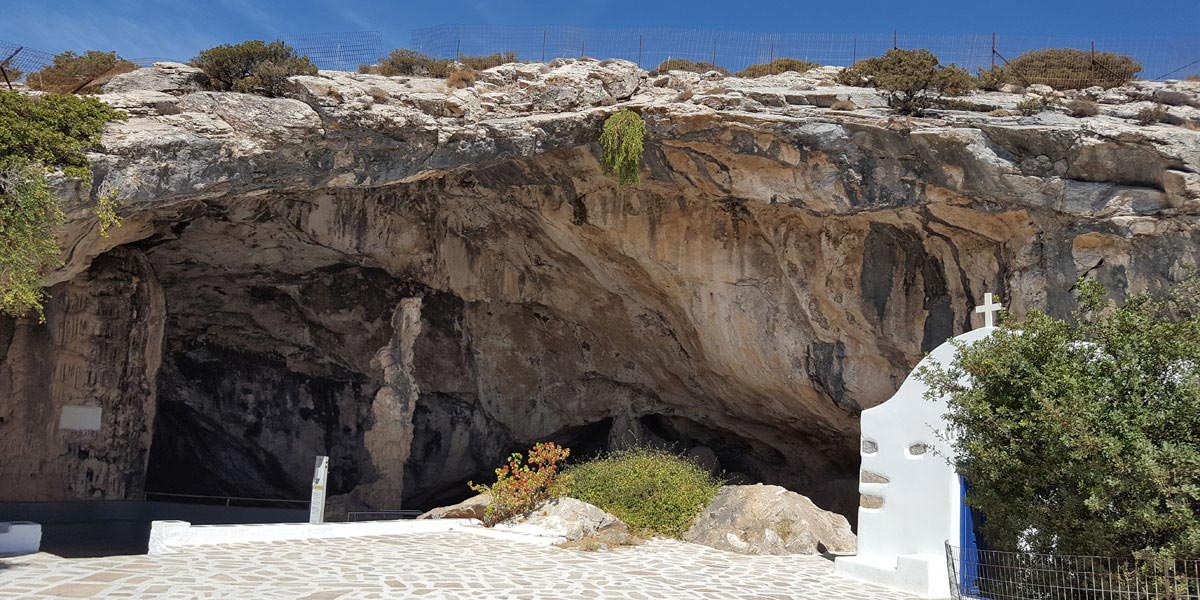Antiparos might be a small island but it definitely has the way to fill the visitors with unforgettable memories and moments. Sea – Sun – Sky; your destination is the nature’s diamond in the Aegean, Antiparos.

Antiparos coast
Antiparos coast is dotted with picturesque inlets and secret coves with turquoise waters. The coastline provides a unique experience for the combination of crystal clear water and wildlife is abundant. The silver and golden sandy beaches surrounded by rocky cliffs, will grasp your breath. There are many ways to explore Antiparos coastline or visit the nearby island of Despotiko. Paddle, discover a secluded bay, swim and enjoy aegean sea at its best. If you are lucky enough, you may also be encountered by the “local inhabitants” at Despotiko bay; the seals and manta rays of the Aegean. The numerous beaches surrounding the island, either with pebbles or sand, start from the northern part – Camping beach – to the south where the settlement of Agios Georgios and the Vathys Volos beach are located.
The chapel of Agios Georgios (Saint George) in the south part of the island offers the visitor the authentic contrast that the Aegean is known for; dry land, yet a sea full of life.
You can enjoy the picturesque sunset from the beach at Sifneiko or standing in front of the Agios Georgios chapel. Both locations are known for the amazing sunset one can experience throughout the year, as your eyes will feast on the ever-changing colors of nature’s canvas.

Antiparos inland
Antiparos is not only considered as a radiant jewel of the Aegean due to its magnificent coastline, but also for its enchanting aura that seduces whoever sets foot on the island. Pure white houses, stroked by light and dark blue brushes, small alleys coloured by bougainvillea and scenting eucalyptus; these are the elements that could describe Antiparos in a few words.
The Venetian castle at the centre of Chorio (means village-the main settlement) is part of the centuries old history of Antiparos. Renowned pirates in the Mediterranean waters used Antiparos as their safe harbor either from the weather or from their hunters. They would also visit the island for “koursema”, which means looting. To defend themselves, the local inhabitants of Antiparos, who at that time were Venetians, built in 1440 the architectural marvel, known as “Kastro”, which means castle. The two-storey dwellings, form the surrounding wall of Kastro, while a Gothic style gate completes the fortress. A stroll through Chorio is one of the most experiencing activities you can do while in Antiparos.
“Antiparos Routes” is a network of pathways specifically designed to offer you the opportunity to explore the island’s beauties. These trekking routes cover the island from North-to-South, and will guide you through the natural, ancient, and pre-industrial history of the island. Another option for the most athletic ones, is to experience these routes on bicycle. In case you are interested in traditional agriculture, Kambos would be the place to visit. Kambos is a village in the center of the island, surrounded by the local farms where traditional agricultural techniques, such as wine-making still survive through the ages.

Antiparos heritage
Antiparos’ natural heritage consists of, but not limited to, wetlands protected by Natura 2000, the renowned cave of Antiparos on Agios Ioannis hill where stalactites and stalagmites form a natural “rocky waterfall”, and the abandoned zinc mining facilities up on the hills of the island.
Antiparos is famous for its traditional local food, such as “ksinomizithra” which means sour-cheese, used either on top of salads or within dough to make small pies. You can enjoy the sun-dried grilled octopus or the sun-dried fish called “gouna”, accompanied by Ouzo or “suma”, the local spirit.
The latest great discovery of archaeological interest is the ancient temple of Apollo located on the island of Despotiko right across the settlement of Agios Georgios. It is said that the secrets and the importance of this temple is yet to be revealed, but some scholars suggest that it was among the most important temples in Ancient Greece. Who knows? You could be a witness on site when the proof comes to light.

